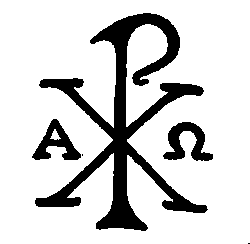THIRD SUNDAY OF LENT (A)
Today we witness the encounter of Jesus with the Samaritan woman at the well (Jn 4:5-42). Or perhaps it is better to say we witness her encounter with Christ. This woman of Samaria comes to the well to draw water. There she meets Jesus who asks her to give Him a drink. She is taken aback because she recognizes Jesus as a Jew, and Jews and Samaritans have nothing to do with one another (especially in matters regarding food and drink). Plus, it was considered unseemly at the time for men to converse with women in public. Nevertheless, Jesus continues to speak with her, and offers her “living water.” Jesus explains that this water is different from the water in the well: “Whoever drinks the water I shall give will never thirst; the water I shall give will become in him a spring of water welling up to eternal life.”
When she asks Jesus for this water, Christ asks her to call her husband. She replies that she has none. Jesus then astonishes her by revealing that He knows that she has had five husbands and the man she is with now is not her husband. Identifying Jesus now as a prophet, she asks Him whether God should be worshiped on Mount Gerizim as the Samaritans do, or in Jerusalem as the Jewish people do. Jesus tells her of a day that is coming when God will be worshiped “in spirit and truth.” The woman then asks about the coming Messiah and Jesus replies, “I am He, the one speaking with you.”
When the disciples arrive on the scene and are scandalized to see their teacher conversing with a woman, she returns to her town “leaving her water jar” and begins to tell everyone, “Come see a man who told me everything I have done. Could He possibly be the Christ?” The gospel tells us, “Many of the Samaritans of that town began to believe in Him, because of the word of the woman who testified.” They invited Jesus to stay with them, and after two days said, “We no longer believe because of your word; for we have heard for ourselves, and we know that this is truly the Savior of the world.”
This is a story of evangelization. The entire community begins to believe in Christ through the testimony of one person who had an encounter with Him. They then seek to know Jesus better for themselves, and once they do so, they no longer believe merely on the testimony of another, but because of their own relationship with God through His Son. Such is the Christian life; we are invited to come to Christ first through the witnessing of others, but eventually our faith must be founded in that personal relationship that is built by spending time with the Lord.
At the heart of this story is that initial, direct, and personal encounter that the woman had with Jesus. And so we should ask, who is the Samaritan woman? There are two ways we can answer this question.
ANSWER ONE
From the point of view of the Jewish people, the Samaritan woman is very much on the unsavory fringe of society. Firstly she is a woman, and as I mentioned above, it was considered rather unseemly for a man to be openly conversing with a woman in public at this time. The gospel tells us that when the disciples discover Jesus at the well, “They marveled that He was talking with a woman” (Jn 4:27).
But even more striking, she is a Samaritan. By this time there had been centuries of animosity between the Jewish people and the Samaritans. Eight hundred years earlier, the Assyrians had invaded northern Palestine and forcibly removed the majority of the Israelites who lived there (see 2 Kings chapter 17). But some remained, who intermarried with the invading tribes and assimilated many of their pagan practices. These were the Samaritans. Their faith was a mixture of Israelite and pagan religion.
It is interesting to note that the five foreign tribes who intermarried with the Samaritan people introduced five foreign deities into the Samaritan religion. These were known as Baal, which means “lord” or “husband.” So when Jesus tells the woman, “you have had five husbands, and the one you are with now is not your husband,” in a way He is addressing the situation of all of the Samaritans, who have been unfaithful to God, Israel’s covenant spouse, by worshiping these five false idols.
But more importantly, at least to her, Jesus speaks directly to her situation. She has endured much struggle and hardship in her attempts at marriage. She has not been pursuing the good of marriage in a correct and holy way. Her life is conflicted and unsettled and not at ease. Jesus sees this immediately and identifies the reality of her sins. Nothing is hidden from Him.
ANSWER TWO
The Samaritan woman is you. That is to say, she is all of us — a sinner in need of repentance and forgiveness who may not even realize it until we have an encounter with the Truth. We go about our daily lives, doing what we need to do, perhaps without much thought, much purpose, or much joy. The Samaritan woman was making a routine trip to the well to bring in water; daily drudgery. We, too, follow the same routine day after day for the most part. We go to class, we go to work, we check our Facebook or our email, we sit at the same table in the cafeteria for lunch. Not that routine itself is bad — routine can be good. Monastic life is the epitome of routine, but it is routine crafted from holy discipline. Routine without intention and without purpose is more existence than life. That sort of daily drudgery can be mind numbing.
And then one day we meet Him. We are not looking for it or expecting it, but we have an encounter with the Truth. Perhaps it happens in a conversation with a classmate, or a friend, a professor, or campus minister. Perhaps we meet Him in an article that shows up on our Facebook newsfeed. Perhaps we meet Him at Mass, or at a Bible study. We might not have even been looking for Him, but we look up one day, like the woman at the well, and discover that the Truth has found us. Like the bright sun that reveals how dirty your car’s windshield actually is, the light of Truth illuminates our failings. “Of course you are unhappy,” He tells us. “You have been living with sin.” And He identifies for us, clearly, what those sins are. But rather than feel condemned, we feel relieved. We have been ill, and now finally we have a diagnosis and a prescription. For the same One who shows us our sins offers us living water. If we take this water, we know we will never thirst again, for this water is mercy and forgiveness.
When the Samaritan woman meets Jesus, and realizes who He is, she leaves her water jar at the well when she runs to tell others. St. Augustine sees in her water jar the desires of those who seek to find pleasure in the dark wells of this world. Drinking from these wells will always leave us thirsting for more. The Samaritan woman had found living water that would never leave her thirsting, and so she left her jar behind. Seeking happiness in the things of this world will always leave us wanting, because the things of this world – even the good things, but especially the bad – are finite and imperfect. Our souls were made for a perfect and eternal happiness, and so we will only be happy when we fall in love with He who is perfect and eternal. Other things may bring us a measure of temporary happiness, but will eventually leave us feeling empty. As St. Augustine said in his Confessions, “My heart is restless, O Lord, until it rests in Thee.”
When Christ comes to us and reveals to us our sins, let us pray that we, too, would have the courage and conviction to leave our dark desires behind, that we may drink deeply from that spring of water which wells up to eternal life. Only then will we be healed. Only that way will our hearts be at rest.
—
WCU Catholic Campus Ministry
Matthew Newsome, MTh, campus minister


